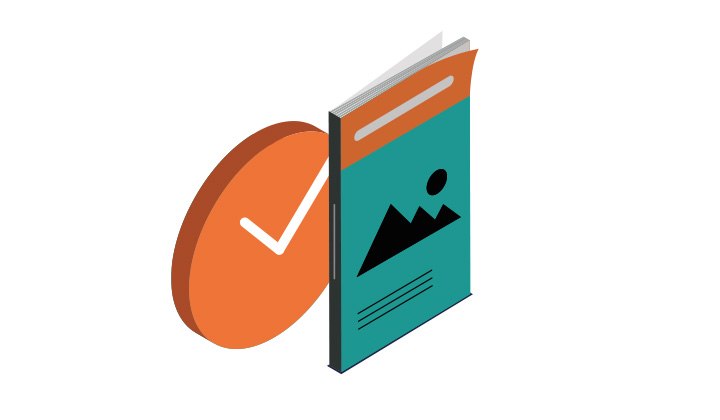PIM Wiki
A Product Information Management system is a solution that gives you full control of your data, freeing up valuable time as you don’t need to search for information and manage various systems.
To understand the PIM world it is necessary to know a number of key terms that often emerge when you explore the area.
We explain 15 of the most common ones:
Catalog management
Catalog management is the process of deciding which products should be included in a catalog and how the products should be grouped and categorised. A Product Information Management system (PIM) can ensure that the catalog items have complete and correct data. A PIM system can also control the planning and the editing process in the production phase of a catalog.

Data mapping
Data mapping is the process of transforming data elements from various data models into useful definitions. PIM systems often need to provide data mapping either to receive data from various sources or provide data in various formats.
Digital Asset Management
Digital asset management (DAM) is the name used for systems that store and handle digital files such as pictures, videos, documents and so forth. The system lets the user store, search, edit and organise their digital assets.
While DAM systems are designed to handle digital assets like logos and videos, PIM systems are designed to handle product and product-related information.
Some PIM systems (e.g. Perfion) have built-in DAM functionality that allow the user to maintain meta data about images directly with product data but also maintain images that are not directly product oriented, e.g. lifestyle images, logos etc.
Electronic Catalog
An electronic catalogue is an online publication in which the products and services offered by a company are showed.
When managing an electronic catalog, companies tend to use spreadsheets. But as well as being perfect for many purposes, spreadsheets are quite bad at this exact task - things such as dealing with multiple sources of information, differentiating between mobile and desktop versions of media and product descriptions, quality control and so on it close to impossible to do in a spreadsheet in a smart way. A Product Information Management system (PIM) can be the tool you need to manage your electronic catalog the best way.
Enterprise Resource Planning ERP
ERP is a category of business management software that an organization can use to collect, store, manage, and interpret data from these many business activities. Typically ERP systems handle inventory, sales orders, prices and finance. Often the ERP-system is a suite of integrated applications, and in combination with a Product Management System (PIM) you have the ideal e-commerce technology stack.

GS1
GS1 is a classification standard for structuring product categories. GS1 standards define which attributes each category can have so there is a standard for describing products.
Master Data Management
Master Data Management is the process of handling all data from a company. The reason to do so is to find patterns and opportunities to cut costs and/or invest.
Master data is data that is essential for the company's operations, such as data on products, customers, employees, locations, suppliers, etc. These data may be duplicated or spread over the business, e.g. in different departments, which can complicate the business processes.
The data stored in a PIM system is part of the Master Data Management as it contains detailed attributes about the products. This is relevant if eg. sales should be reported by specific technical attributes that are otherwise not available in the ERP system.
MDM systems allow to consolidate both financial, sales and product data into one repository.
Microdata
Microdata is a standardized and structured way of specifying what item types on a page are about. Item types such as products or people for example. Item types can have certain attributes/markups like fx itemprop="jobTitle">graduate research assistant. By writing item attributes in accordance with the conventions it makes it easier for the engines to crawl websites and create a richer and easier experience for searchers by providing more relevant results to the users.
Open Database Connectivity ODBC
Open Database Connectivity (ODBC) is a standard application programming interface (API) for accessing database management systems (DBMS). An application written using ODBC can be ported to other platforms, both on the client and server side, with few changes to the data access code.
Product Data Enrichment
Product data enrichment is the process of appending data to products. An efficient e-commerce business depends on enriched data. If the customers can’t find the information they need, they quite likely go somewhere else to buy the product. Therefore, you must provide them with enhanced product images, apt description, schematics, availability, and product warranty data, and it is important that these data are kept updated. A Product Management System (PIM) can help you do that from one place only. A Product Management System (PIM) can also help identifying which products need enrichment and the overall data quality of the existing product data.
Product Lifecycle Management
Product Lifecycle Management (PLM) systems are typically used for product development and oversee the entire lifecycle of a product. It comprises the conception of the idea to its eventual design and prototyping, on to product manufacturing and release to the service required after the sale of the product, and finally the disposal of any unsold products. It is software-enabled like a Product Management System (PIM), but PLM systems do not carry marketing information or details that necessarily help sales. When a product is ready for the market a PLM system feeds the information into a PIM system, where the information will be enriched with marketing information. Therefore, you’ll need PLM and PIM at the same time to have a setup, where you can combine your product information management systems with product lifecycle management.
Product sheets, Data sheets
A Product brochure is a physical or electronic brochure that presents a list of products in a graphical fashion. Product brochures must be kept up-to-date if they are to have a value. A Product Information Management system (PIM) ensures that information for product brochures are updated in one central place and that the same information can be used in other channels like webshops.
Single Source of Truth
Single source of truth (SSOT) is a concept that an organization can apply as part of its information architecture to ensure that everyone in the organization uses the same data when making business decisions. The aim of adopting a single source of truth is to provide employees with a centralized view of data that everybody can agree upon, which may also be referred to as a single version of the truth or golden record.
XML Localization Interchange File Format - XLIFF
XLIFF (XML Localization Interchange File Format) is an XML-based format created to standardize the way localizable data are passed between tools during a localization process.
In a Product Management System (PIM), some data will be universal, while others (such as textual descriptions) will exist for each language that you wish to use. You can assign different users to maintain data in their respective languages, or you can use external translation tools or agencies to maintain your data. Your PIM lets you export the standard XLIFF format, and import a new file with any additions or updates.
What is PIM and why use a PIM system?
Read the definitive guide to Product Information Management
